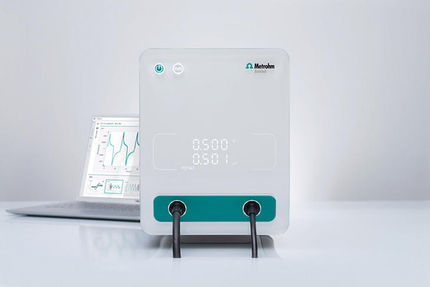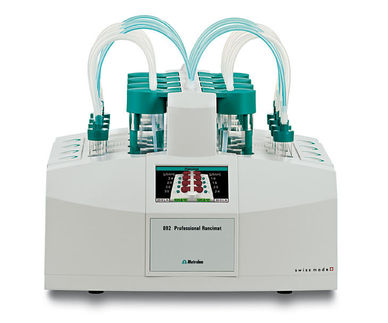|
|
| Schematic diagram of the three-dimensional structure of ω-conotoxin MVIIA (ziconotide). Disulfide bonds are shown in gold.
|
|
|
| Identifiers
|
| Symbol
| Omega conotoxin
|
| Pfam
| PF02950
|
| InterPro
| IPR004214
|
| SCOP
| 2cco
|
| OPM family
| 120
|
| OPM protein
| 1fyg
|
| Available PDB structures:
1qfbA:55-62 1dg0A:56-61 1dfzA:55-61
1dfyA:55-61 1fygA:46-70 1mvj :46-71
1mvi :46-70 1dw5A:46-70 1ttkA:46-70
1feoA:46-71 1omg :46-70 1dw4A:46-70
1tt3A:46-70 1ttlA:46-72 2cco :46-72
1omc :46-72 1tr6A:46-72 1av3 :46-72
1kcp :46-72 1fu3A:52-78 1rmkA:52-82
1y29A:1-28 1wct :51-60 1tck :2-22
1tch :2-22 1tcg :2-22 1tcj :2-22
1r9iA:4-24 1as5 :3-26 1jloA:3-26
|
|
|
| Identifiers
|
| Symbol
| Alpha conotoxin
|
| Pfam
| PF07365
|
| InterPro
| IPR009958
|
| SCOP
| 1mii
|
| OPM protein
| 1akg
|
| Available PDB structures:
1akg :45-60 2ak0A:22-38 1m2c :22-37
1miiA:22-37 2ajwA:22-38 1qmwA:50-62
1hjeA:50-62 1ul2A:21-36
|
A conotoxin is one of a group of neurotoxic peptides isolated from the venom of the marine cone snail, genus Conus.
Conotoxins, which are peptides consisting of 10 to 30 amino acid residues, typically have one or more disulfide bonds. Conotoxins have a variety of mechanisms of actions, most of which have not been determined. However it appears that many of these peptides modulate the activity of ion channels.[1]
Types and biological activities of conotoxins
The number of conotoxins whose activities have been determined so far is five, and they are called the α(alpha)-, δ(delta)-, κ(kappa)-, μ(mu)-, and ω(omega)- types. Each of the five types of conotoxins attacks a different target:
Disulfide connectivities
Types of conotoxins also differ in the number and pattern of disulphide bonds [9]. The disulphide bonding network, as well as specific amino acids in inter-cysteine loops, provide the specificity of conotoxins[10].
Omega, delta and kappa conotoxins
Omega, delta and kappa families of conotoxins have a knottin or inhibitor cysteine knot scaffold. The knottin scaffold is a very special disulphide-through-disulphide knot, in which the III-VI disulphide bond crosses the macrocycle formed by two other disulphide bonds (I-IV and II-V) and the interconnecting backbone segments, where I-VI indicates the six cysteine residues starting from the N-terminus. The cysteine arrangements are the same for omega, delta and kappa families, even though omega conotoxins are calcium channel blockers, whereas delta conotoxins delay the inactivation of sodium channels, and kappa conotoxins are potassium channel blockers[9].
Mu conotoxins
Mu conotoxins have two types of cysteine arrangements, but the knottin scaffold is not observed. Mu conotoxins target the voltage-gated sodium channels[9], and are useful probes for investigating voltage-dependent sodium channels of excitable tissues[11].
Alpha conotoxins
Alpha conotoxins have two types of cysteine arrangements[12], and are competitive nicotinic acetylcholine receptor antagonists.
See also
References
- ^ Terlau H, Olivera BM (2004). "Conus venoms: a rich source of novel ion channel-targeted peptides". Physiol. Rev. 84 (1): 41–68. doi:10.1152/physrev.00020.2003. PMID 14715910.
- ^ Nicke A, Wonnacott S, Lewis RJ (2004). "Alpha-conotoxins as tools for the elucidation of structure and function of neuronal nicotinic acetylcholine receptor subtypes". Eur. J. Biochem. 271 (12): 2305–19. doi:10.1111/j.1432-1033.2004.04145.x. PMID 15182346.
- ^ Leipold E, Hansel A, Olivera BM, Terlau H, Heinemann SH (2005). "Molecular interaction of delta-conotoxins with voltage-gated sodium channels". FEBS Lett. 579 (18): 3881–4. doi:10.1016/j.febslet.2005.05.077. PMID 15990094.
- ^ Shon KJ, Stocker M, Terlau H, Stühmer W, Jacobsen R, Walker C, Grilley M, Watkins M, Hillyard DR, Gray WR, Olivera BM (1998). "kappa-Conotoxin PVIIA is a peptide inhibiting the shaker K+ channel". J. Biol. Chem. 273 (1): 33–8. doi:10.1074/jbc.273.1.33. PMID 9417043.
- ^ Li RA, Tomaselli GF (2004). "Using the deadly mu-conotoxins as probes of voltage-gated sodium channels". Toxicon 44 (2): 117–22. doi:10.1016/j.toxicon.2004.03.028. PMID 15246758.
- ^ Nielsen KJ, Schroeder T, Lewis R (2000). "Structure-activity relationships of omega-conotoxins at N-type voltage-sensitive calcium channels". J. Mol. Recognit. 13 (2): 55–70. PMID 10822250.
- ^ Bowersox SS, Luther R (1998). "Pharmacotherapeutic potential of omega-conotoxin MVIIA (SNX-111), an N-type neuronal calcium channel blocker found in the venom of Conus magus". Toxicon 36 (11): 1651–8. doi:10.1016/S0041-0101(98)00158-5. PMID 9792182.
- ^ Prommer E (2006). "Ziconotide: a new option for refractory pain". Drugs Today 42 (6): 369–78. doi:10.1358/dot.2006.42.6.973534. PMID 16845440.
- ^ a b c Jones RM, McIntosh JM (2001). "Cone venom--from accidental stings to deliberate injection". Toxicon 39 (10): 1447-1451. PMID 11478951.
- ^ Sato K, Kini RM, Gopalakrishnakone P, Balaji RA, Ohtake A, Seow KT, Bay BH (2000). "lambda-conotoxins, a new family of conotoxins with unique disulfide pattern and protein folding. Isolation and characterization from the venom of Conus marmoreus". J. Biol. Chem. 275 (50): 39516-39522. PMID 10988292.
- ^ Zeikus RD, Gray WR, Cruz LJ, Olivera BM, Kerr L, Moczydlowski E, Yoshikami D (1985). "Conus geographus toxins that discriminate between neuronal and muscle sodium channels". J. Biol. Chem. 260 (16): 9280-9288. PMID 2410412.
- ^ Gray WR, Olivera BM, Zafaralla GC, Ramilo CA, Yoshikami D, Nadasdi L, Hammerland LG, Kristipati R, Ramachandran J, Miljanich G (1992). "Novel alpha- and omega-conotoxins from Conus striatus venom". Biochemistry 31 (41): 9919-9926. PMID 1390774.
This article includes text from the public domain Pfam and InterPro IPR004214
|







